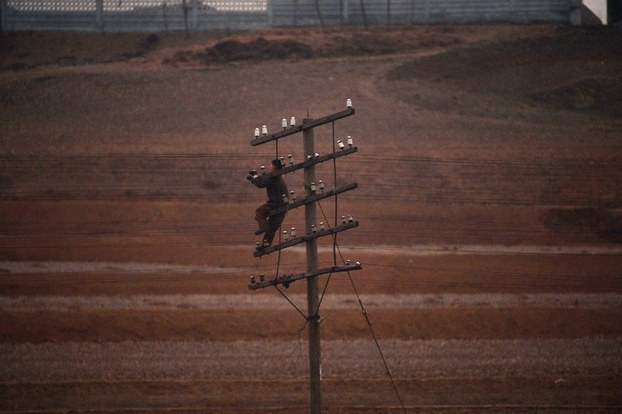




The rapidly appreciating Chinese currency is not stopping North Koreans from purchasing China-manufactured hand-operated power generators and other auxiliary sources of electricity whose costs have jumped exponentially.
The items are among the few Chinese-made goods that are popular in the country’s local markets, or “Jangmadang,” as the won tumbles against the popular yuan currency and as people prepare for extended outages during the ongoing winter months in the electricity-starved nation.
Sources inside North Korea said that trade in daily goods imported or smuggled from China has come to a virtual standstill due to the won’s falling value against the yuan.
The yuan—the currency of choice for retailers due to its comparative stability—had been fetching about 1,000 won before the multi-fold Chinese currency’s appreciation.
But as the weather becomes colder, reducing North Korea’s hydroelectric production, consumers are lining up to purchase the costly Chinese generators, as well as other devices such as solar panels and rechargeable batteries, the sources said.
“No matter how little trade occurs at local markets, multi-purpose batteries and solar-cell panels are hot items,” one source from North Hamgyong province, along the border with China, told RFA’s Korean Service.
“The latest Chinese hand-operated generator has become extremely popular recently.”
As North Korea is unable to meet about 70 percent of electricity needs, people use alternative power sources to light up their homes, the source said, speaking on condition of anonymity.
Even more privileged members of society are jostling to buy the generators to charge cell phones, operate laptop computers, and run DVD players.
The source said that the hand generator costs around 250 yuan (U.S. $40)—way beyond the salary of an average worker—but “anyone with money will buy one regardless of the price.”
Hand generators are popular because of the ease with which they can be charged, he said, adding that many people also rig the generators to work with their bicycles to make power production even easier.
Imported devices
Only two North Korean provinces—North Pyongan and Jagang—handle the imports of electronic goods, such as the hand-operated power generators from China.
A source from Jagang, which also neighbors China, said that North Korean merchants converge at the two areas where the import of electronic goods from China are cleared through customs to purchase the alternative power sources for sale elsewhere in the country.
“Clothes, textile goods and shoes [from China] are distributed nationwide through the customs offices of Yanggang and North Hamgyong province, but all medicine, toy, and electronic goods [only] enter [the country] through the customs offices of North Pyongan and Jagang provinces,” he said.
He said that the merchants largely came from Hyesan city in Yanggang and Chungjin city in North Hamgyong, or from Pyongsong and Nampo cities in South Pyongan province.
They purchase the generators in bulk in North Pyongan’s Sinuiju and Jagang’s Manpo cities for resale in their hometowns, he said.
While the generators can cost anywhere between U.S. $5 and $50, “they are essential home supplies during winter when there will be a [severe shortage] of electricity,” the source said.
Generator alternatives
The source from North Hamgyong province told RFA that “multi-purpose” rechargeable batteries are also popular, as they have a variety of voltage settings.
He said the multi-purpose batteries, which are charged with the use of generators, sell for around 200 yuan (U.S. $33) each.
Additionally, alternative power sources exist for families with less money to spend, but just as much of a need for electricity during the winter months, the source said.
“Portable batteries [of only one voltage] and solar-cell panels are sold at between 30 and 50 yuan (U.S. $5 and $8), so rural dwellers with less money prefer them,” he said.
“It is possible to light one’s home all night long with a 1 meter [3.3 feet] square solar-cell panel or a portable battery.”
The North requires nearly 2 1/2 times the amount of its annual electricity production capacity to meet the nation’s basic power needs and is urgently seeking assistance from its ally China, a North Korean electrical engineer told RFA last month.
North Korea suffers from widespread electricity shortages and is moving towards hydroelectric power as a supplement for its dwindling coal resources.
But even Pyongyang, where residents normally enjoy one of the most reliable power supplies in any city across the nation, often suffers severe power shortages due in part to the inability of its supplying dam to operate at full capacity during the annual dry season, sources have said.
Reported by Sung-hui Moon for RFA’s Korean Service. Translated by Doeun Han. Written in English by Joshua Lipes.